Open Source Lesson Plan

Lesson Plan Mindmap for “Open Source” – Click to Enlarge
CLICK ICONS TO JUMP DIRECTLY TO EACH SUBJECT ON THIS PAGE








OPEN SOURCE LESSON PLAN
This page is a free-shared lesson plan archive for teaching all educational subjects within the context and theme of “Open-Source.” It is purposed for use in community education environments, homeschool environments, traditional schooling environments, or as a supplemental and fun addition to any education program. As part of the complete Education for Life Program, this lesson plan is specifically designed to work in conjunction with the other components: Foundations of Teaching, Curriculum, Teaching Strategies, Learning Tools and Toys, Evaluation Model, and The Ultimate Classroom. If you’d like to learn how all these components work together, click here. Click here for the specifics focused on just using the lesson plans:
CLICK HERE FOR A DETAILED TUTORIAL ON HOW TO USE THIS LESSON PLAN
NOTE: The colors are provided as a possible linear progression (red/easiest to violet/most challenging) for people that might prefer a more linear structure. Our core philosophy, however, is that through creativity every color can be made easy or challenging for any learning level.
RELATED PAGES (mouse-over for descriptions and click for complete pages)
EDUCATION OVERVIEW | HOW TO USE THIS COMPONENT | OUR OPEN SOURCE PURPOSE
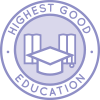
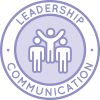
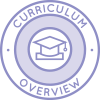
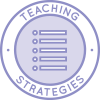
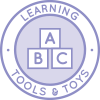
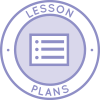
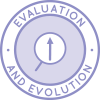
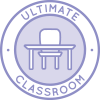
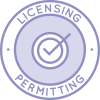

WAYS TO CONTRIBUTE TO EVOLVING THIS EDUCATION PROGRAM WITH US
SUGGESTIONS | CONSULTING | MEMBERSHIP | OTHER OPTIONS
A NOTE ABOUT ALL ONE COMMUNITY LESSON PLANS
The One Community lesson plans are intentionally designed for use in ANY educational environment and with ALL educational, cultural, religious/spiritual, and philosophical approaches to teaching and learning. They are designed without an ideological approach and specifically so they can be adapted to include the views, preferences, methodologies, and/or ideologies preferred by different parents and teachers.
For maximum flexibility and adaptation, they are also designed to be combined to teach multiple subjects at the same time. Doing this increases the creativity, effectiveness, and fun of your learning environment. Once we are on the property and operating our version of the complete school and Education for Life program, we will be adding video examples of how to combine the lessons. In the meantime, visit the Teaching Strategies page for a list of suggestions.
ARTS AND TRADES
CLICK HERE FOR THE COMPLETE SUBJECT OUTLINE FOR ARTS & TRADES
 | TEACHING ARTS AND TRADES WITHIN THE CONTEXT OF OPEN SOURCE |
 | The Arts- Create a collage of pictures about sharing from magazine clippings or pictures that other people took or take*. Explore how the pictures were open source because they were someone else’s work that you used. Now, open source it by having 5 other people add pictures to it to make it even bigger and better.
- Interview 10 people and ask them what open-source means to them and draw a picture* to represent your discoveries.
- Create a musical song* or poem* about sharing. Now, open source it by having 5 other people add to it to make it even bigger and better.
- Create a painting, drawing, or sculpture* themed on sharing. Now, open source it by having 7-10 other people add to it to make it even bigger and better.
- Create a theatrical piece* themed on sharing and have 10+ other people add to it to make it even bigger and better. Have it performed.
- Create within an existing form, or create a new form of art that by definition would be open source and use it create a ‘piece’* within it that represents or teaches people about open source.
- Partner with someone that has created a popular/viral video to create a video* about sharing and open source. Put it out to the world as open source and teach them how to remix it and move it forward, creating a viral chain of videos about open source and sharing.
|
 | Trades- Name* 5 trades that you consider to be open-source.
- Interview 10 people and ask them what they would list as the top 3 open source trades ” order them in a chart or list* based on which ones you feel are the best representations of open-source (how well they represent open source).
- Interview 3+ people that are in trades that are interesting to you and find out what things in their field are or can be open-sourced and create a fun way to share* the results of what you learned.
- Pick a trade and create a plan to make it more open-source. Present* your results.
- Create your own open-source trade* ” explain the complete structure of it, how it would work and be effective, etc. in a short brochure*.
- Create your own open-source industry* ” explain the complete structure of it, how it would work, be effective, etc. Describe your industry in a 3 to 5 page essay*.
- Create a comprehensive plan* for integrating open source into global business practice and show how it is a win-win solution. Create a detailed strategy written and emailed* in an open letter to businesses.
|
| CLICK HERE TO EMAIL US IF YOU HAVE AN IDEA TO ADD TO THIS SECTION |
* Please note that anything with an asterisk is just a suggestion. The diversity of options with asterisks are interchangeable and purposed to stimulate your own ideas. Any one of these suggestions could be replaced with a written paper, any form of art project (drawing, painting, music, paper mache, clay, wood, knitting/embroidery, metals, etc. etc.), an experiment, a presentation, a mindmap, a computer program, a web design project, a piece of poetry or a song, an interpretive dance or play, a group project, or anything else. What we feel is most important is that both the Learner and the Teacher agree on an exercise/activity they both feel would be maximally engaging, fun, and effective. If you come up with an idea we haven’t already thought of, please share it with us.
ENGLISH
CLICK HERE FOR THE COMPLETE SUBJECT OUTLINE FOR ENGLISH
Note: Any language can be substituted for English. The subject is listed here as “English” because that is the primary language of most of the people on the team, and the official language of the country we’re building our initial location in.
* Please note that anything with an asterisk is just a suggestion. The diversity of options with asterisks are interchangeable and purposed to stimulate your own ideas. Any one of these suggestions could be replaced with a written paper, any form of art project (drawing, painting, music, paper mache, clay, wood, knitting/embroidery, metals, etc. etc.), an experiment, a presentation, a mindmap, a computer program, a web design project, a piece of poetry or a song, an interpretive dance or play, a group project, or anything else. What we feel is most important is that both the Learner and the Teacher agree on an exercise/activity they both feel would be maximally engaging, fun, and effective. If you come up with an idea we haven’t already thought of, please share it with us.
HEALTH
CLICK HERE FOR THE COMPLETE SUBJECT OUTLINE FOR HEALTH
 | TEACHING HEALTH WITHIN THE CONTEXT OF OPEN SOURCE |
 | - Discuss or draw a picture* about how sharing and working in teams make you feel.
- Make up an exercise, meal, or happiness practice* and share it with 10 people by teaching it to them and inviting them to improve it, and share your results.
- Interview 10-20 people and ask each what their favorite health practice is in each health category (within physical, nutritional, emotional/social, or spiritual health) and create a way to combine and share* your findings that will be helpful to others.
- Choose a health related industry that interests you (within physical, nutritional, emotional/social, or spiritual health) and do a comprehensive search on open source and free shared resources that are available. Choose and implement the one you feel will have the most positive impact on your life and create a report* on your results, including how you came to choose the one you did, and share it in a way you think will help others.
- Study how open source sharing has increased or decreased over time in the medical fields and health related industries and any impacts it has had on the general population’s health, and write a thorough* report on this.
- Identify and describe what you would consider the number one open source health related innovation ‘of all time’ and use it to create a new way to forward human health. Make a presentation*to health professionals of your new way.
- Create and implement an open source strategy* to increase transparency and open source in the food or medical industry, and open source your strategy.
- Identify and describe what you would consider one of the top new open source health related innovations and create and implement a comprehensive strategy* to forward its positive impact on humanity even more.
- Examine the medical industry and determine one facet that is currently not open source that you believe if open sourced would have the greatest positive impact on humanity. Create and implement a comprehensive strategy* to open source that facet and forward its positive impact on humanity.
|
| CLICK HERE TO EMAIL US IF YOU HAVE AN IDEA TO ADD TO THIS SECTION |
* Please note that anything with an asterisk is just a suggestion. The diversity of options with asterisks are interchangeable and purposed to stimulate your own ideas. Any one of these suggestions could be replaced with a written paper, any form of art project (drawing, painting, music, paper mache, clay, wood, knitting/embroidery, metals, etc. etc.), an experiment, a presentation, a mindmap, a computer program, a web design project, a piece of poetry or a song, an interpretive dance or play, a group project, or anything else. What we feel is most important is that both the Learner and the Teacher agree on an exercise/activity they both feel would be maximally engaging, fun, and effective. If you come up with an idea we haven’t already thought of, please share it with us.
MATH
CLICK HERE FOR THE COMPLETE SUBJECT OUTLINE FOR MATH
 | TEACHING MATH WITHIN THE CONTEXT OF OPEN SOURCE |
 | - Talk* about how you could use numbers for sharing.
- Tell a story* that uses fractions and the distributive property to describe the sharing process.
- Create a volume experiment that uses ratios and sharing and create a graph* that shows the metrics of the experiment.
- Draw a collage* of overlapping geometric shapes and create 50 algebraic equations that represent the shared spaces/lines within the overlapping areas.
- Create an experiment* that uses random sampling and statistics of a smaller population to analyze and infer aspects to its larger population regarding specifics of your choice on the topic ‘sharing’ and/or ‘open source’. Write a report* on this including the equations and graphs for your experiment, and the results. Also include an analysis of how statistics in and of itself relates or does not relate to the topics of ‘sharing’ and/or ‘open source’.
- Write an analysis/argument* comparing the relationship of independent vs conditional probabilities (possibly in compound events) in relation to sharing and/or open source. Create 20+ math problems* that support your arguments.
- Make a comprehensive analysis of how mathematics is shared/open sourced between different applied fields of mathematics. Find a field or fields that could currently benefit from the enhancement another field could bring to it, and construct a comprehensive way to begin and open source/share the integration process*.
- Mathematicians have been trying to come up with a mathematical equation to explain the nature of the universe. Using this mentality, create a mathematical equation* that ‘proves’ open source/sharing is the center/basis of the universe, and write a mini-thesis* to support your equation, then open source it all.
|
| CLICK HERE TO EMAIL US IF YOU HAVE AN IDEA TO ADD TO THIS SECTION |
* Please note that anything with an asterisk is just a suggestion. The diversity of options with asterisks are interchangeable and purposed to stimulate your own ideas. Any one of these suggestions could be replaced with a written paper, any form of art project (drawing, painting, music, paper mache, clay, wood, knitting/embroidery, metals, etc. etc.), an experiment, a presentation, a mindmap, a computer program, a web design project, a piece of poetry or a song, an interpretive dance or play, a group project, or anything else. What we feel is most important is that both the Learner and the Teacher agree on an exercise/activity they both feel would be maximally engaging, fun, and effective. If you come up with an idea we haven’t already thought of, please share it with us.
SCIENCE
CLICK HERE FOR THE COMPLETE SUBJECT OUTLINE FOR SCIENCE
 | TEACHING SCIENCE WITHIN THE CONTEXT OF OPEN SOURCE |
 | Life Sciences- Go outside and find 10 things* you would describe as things that animals and/or plants are sharing.
- Find 15 examples of animals who share with others and make a chart* of them.
- Write a paper* about mycelium, birch trees, or other clonal organisms or lifeforms that share a common root system and what the benefits and drawbacks might be.
- In a poster* list 15 characteristics of plant and animal sharing behaviors/strategies that you would say humanity exhibits. Include 15 examples of what the plants and animals are doing better/more effectively than humans and that we could learn from them.
- Write an in-depth paper* on how pathogens and the human immune system share information to perform their functions.
- Write an in depth analysis* of the similarities between 10 different classes of plants and animals and 10 examples of how each uses and benefits from sharing (100 total examples).
- Create a curriculum* for early education on effective animal/plant sharing behaviors/strategies.
|
 | Physical Sciences- Explore* how kinetic energy is shared between the balls in a Newton’s cradle.
- Explore* the basics of electricity from a sharing perspective.
- Use ten different impacting objects to explain speed and velocity as a product of shared kinetic energy. Create a visual representation* of this.
- Create a Rube Goldberg machine that explains sharing of energy through using electricity (2+ examples), magnetism (4+ examples), and kinetic/potential (10+ examples). Record your creation process in a journal*.
- Describe chemical bonds in terms of sharing using 30 different examples, and write a three to five page argument* for how these are or are not examples of open source.
- Using 20 different open source examples of teaching vectors and 20 of teaching momentum, in a 10 to 20 page paper* describe the differences between them and how each is or is not incorporating the concept of sharing/shared forces, etc.
- Chose a field in the violet level of physical sciences and open source* a solution for how to make that field more open source.
- Most topics in physical sciences could be considered as displays of sharing at some level. Chose a field in the violet level physical sciences and write a thoroughly researched paper* about how the scientific properties of that field are or are not examples of sharing.
|
 | Earth Sciences- Create a picture* that shows how different landforms share space on our planet, including how much space they each use.
- Learn and discuss* how the sun shares lights with the planets and the effects it has on Earth at different times of the year.
- Find, identify and list* 10 different types of rock and share them with someone and tell them about 3 traits that are specifically inherent to each type of rock.
- Write out the complete story* of the water cycle from the perspective of sharing.
- In a presentation* show how vibrations are distributed/shared and experienced by various things before, during, and after an earthquake. See if you can find early warning signs that could help people be more prepared in advance and find a way to open source your results, and a strategy if possible, if you uncover something that could be beneficial.
- Study how other species use natural resources. In an informative booklet* site 25 examples of how the resources are used and shared, and compare each to how humans are using the same resource.
- Analyze all the different systems humanity uses to generate and share earth science data and create* and open source a new way to collect, evaluate and share this data more efficiently and effectively- which could be by creatively combining existing methods.
|
| CLICK HERE TO EMAIL US IF YOU HAVE AN IDEA TO ADD TO THIS SECTION |
* Please note that anything with an asterisk is just a suggestion. The diversity of options with asterisks are interchangeable and purposed to stimulate your own ideas. Any one of these suggestions could be replaced with a written paper, any form of art project (drawing, painting, music, paper mache, clay, wood, knitting/embroidery, metals, etc. etc.), an experiment, a presentation, a mindmap, a computer program, a web design project, a piece of poetry or a song, an interpretive dance or play, a group project, or anything else. What we feel is most important is that both the Learner and the Teacher agree on an exercise/activity they both feel would be maximally engaging, fun, and effective. If you come up with an idea we haven’t already thought of, please share it with us.
SOCIAL SCIENCES
CLICK HERE FOR THE COMPLETE SUBJECT OUTLINE FOR SOCIAL SCIENCES
 | TEACHING SOCIAL SCIENCES WITHIN THE CONTEXT OF OPEN SOURCE |
 | - Discuss* how sharing is or is not an important social skill and whether you would benefit from doing it more or less.
- Ask about how different aspects of family roles, tasks, and responsibilities have or have not been passed down over time, including why you and your parents do things the way you do today and create a picture* showing what you learned.
- Explore how culture is or is not a product of open source sharing, and create a visual picture* to give some examples of things within your culture that have or have not been open source shared over time.
- In a group of 5 people, use nothing but one piece of paper and writing utensils and no talking for the design process, create a game* that teaches people how to share.
- Choose a historical cultural integration/movement where two or more cultures merged, and write a detailed report* from the perspective of how those cultures open source / shared into each other, including at least 20 examples of what they shared with each other and what the open source end result was.
- Do a study of how global governments/regimes/social models impacted and evolved each other over time and create a way* to share your results in a public forum, such as a play, musical, or public event.
- Create an open source strategy* to teach one of the Violet level subjects and open source share your strategy with the world.
|
 | Foreign Languages
(Each of the following is to be completed in the foreign language(s) being studied)- Learn words for different open source sharing related concepts.
- Read and write with words for open source sharing related concepts.
- Explore open source sharing in fiction stories.
- Explore and create different types of literature in relation to open source sharing.
- Compose a new piece of literature about open source sharing.
- Compose a new piece of literature about open source sharing.
- Write a dissertation level paper on open source sharing.
|
| CLICK HERE TO EMAIL US IF YOU HAVE AN IDEA TO ADD TO THIS SECTION |
* Please note that anything with an asterisk is just a suggestion. The diversity of options with asterisks are interchangeable and purposed to stimulate your own ideas. Any one of these suggestions could be replaced with a written paper, any form of art project (drawing, painting, music, paper mache, clay, wood, knitting/embroidery, metals, etc. etc.), an experiment, a presentation, a mindmap, a computer program, a web design project, a piece of poetry or a song, an interpretive dance or play, a group project, or anything else. What we feel is most important is that both the Learner and the Teacher agree on an exercise/activity they both feel would be maximally engaging, fun, and effective. If you come up with an idea we haven’t already thought of, please share it with us.
TECHNOLOGY AND INNOVATION
CLICK HERE FOR THE COMPLETE SUBJECT OUTLINE FOR TECHNOLOGY AND INNOVATION
 | TEACHING TECHNOLOGY & INNOVATION WITHIN THE CONTEXT OF OPEN SOURCE |
 | Technology- Learn how to share and/or forward a photo* on a computer or another piece of technology.
- With your parent’s approval and guidance, set up a sharing account (email, dropbox, social media, etc.) that you feel will be beneficial to help you share things that you create or are important to you and start using it. Explain* why you chose the one you did and your experience with using it.
- Use the Khan Academy code writing platform, or a similar platform, and incorporate it into a presentation* that explains how the platform is and/or is not open source.
- Create* a publicly available open source addition to any open source software platform.
- Study the top 20 open source technological projects/creations and write a multimedia presentation* about how they have changed the world and how open source contributed to that.
- Take 2 unrelated industries and come up with a way* that they could each produce something open source within their industry that when combined with the other industry’s creation would create an open source end result of great value. (Share with industries if possible.)
- Create and launch* an open source makerspace and run it. Interview the people that used it and report on the results and make any adjustments needed to continue its improvement.
|
 | Innovation- Using a box, a piece of yarn or string, a pen, and up to 5 other items of your choice, invent a new way of sharing*.
- Create something and pass it on to 5 additional people in series, having them add on to the creation. Each time you pass it to someone, collaborate with the person you pass it on to to discuss what changes you want them to make to it and when they are finished with the modifications, pass it on to another person and give them instructions*.
- Combine 5 or more different apps and/or technologies (audio, video, picture, media sharing, etc.) to create and creatively share something in a new way*.
- Invent something that you see as a way to improve the life of people around you and open source it to your friends/family/school/community and encourage at least 15 other people to contribute their ideas to evolve the model. Report* on the evolutionary process and the results.
- Combine 25 or more different apps and/or technologies (audio, video, picture, links, etc.) to create and creatively share* something in a new way with one person so that they experience a technological Rube Goldberg and an open source tutorial so others can duplicate your results.
- Take 2 unrelated industries and come up with a way that they could each produce something open source within their industry that when combined with the other industry’s creation would create an open source end result of great value. (Share with industries if possible)
- Create an open source creation tool/platform*- an app or something similar for combining two unrelated industries into a newer creation that allows people to input their ideas, allows people to modify them, and keeps track of the progress and differences along the way in an interesting and engaging way.
|
| CLICK HERE TO EMAIL US IF YOU HAVE AN IDEA TO ADD TO THIS SECTION |
* Please note that anything with an asterisk is just a suggestion. The diversity of options with asterisks are interchangeable and purposed to stimulate your own ideas. Any one of these suggestions could be replaced with a written paper, any form of art project (drawing, painting, music, paper mache, clay, wood, knitting/embroidery, metals, etc. etc.), an experiment, a presentation, a mindmap, a computer program, a web design project, a piece of poetry or a song, an interpretive dance or play, a group project, or anything else. What we feel is most important is that both the Learner and the Teacher agree on an exercise/activity they both feel would be maximally engaging, fun, and effective. If you come up with an idea we haven’t already thought of, please share it with us.
VALUES
CLICK HERE FOR THE COMPLETE SUBJECT OUTLINE FOR VALUES
 | TEACHING VALUES WITHIN THE CONTEXT OF OPEN SOURCE |
 | - Explore sharing. First talk about what your favorite thing to share is and why. Then, name something that you have not liked to share as much, and over the next couple of days, share it with someone else and talk about what the experience was like*.
- Come up with a new idea that you think is cool and write it down* so you can reference it later. Play ‘telephone’ with the idea by sharing it verbally (do not share the written version) with one person and have them write it down, adding to or modifying it any or no way they choose. Next, have them share it with another person. Repeat this at least 10-20 times and share what your end result idea is with everyone in the group*.
- Learn about sharing economies and come up with a way to implement one* at a small scale, with your friends, relatives, community, and/or classmates.
- Ask 10 people to identify what they feel are the top 10 values that support open source sharing. Find a collaborative way to create a visual, audio, or multimedia representation* of the results by asking those people to each create/contribute something that gets added to the final product, thus making the final product an open source collaboration.
- Evaluate existing pay-it-forward organizations and/or sharing economies and create a way to increase participation* in one or more of them that you would like to support, then report your results.
- Develop something that when shared would inspire and grow a multiplying pay-it-forward effect. Identify a way to evaluate and/or measure how quickly it is spreading and make any necessary adjustments to help it spread faster*.
- Create and launch* a mini gift economy and run it. Interview the people that used it and received from it and report on the results*.
|
| CLICK HERE TO EMAIL US IF YOU HAVE AN IDEA TO ADD TO THIS SECTION |
* Please note that anything with an asterisk is just a suggestion. The diversity of options with asterisks are interchangeable and purposed to stimulate your own ideas. Any one of these suggestions could be replaced with a written paper, any form of art project (drawing, painting, music, paper mache, clay, wood, knitting/embroidery, metals, etc. etc.), an experiment, a presentation, a mindmap, a computer program, a web design project, a piece of poetry or a song, an interpretive dance or play, a group project, or anything else. What we feel is most important is that both the Learner and the Teacher agree on an exercise/activity they both feel would be maximally engaging, fun, and effective. If you come up with an idea we haven’t already thought of, please share it with us.

OTHER RESOURCES
We're building a resource section. Click here if you have a suggestion or resource for this page.
OPEN SOURCE SUBJECT RESOURCES (click icons for complete pages)



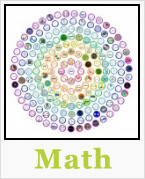



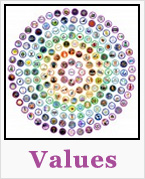
OPEN SOURCE CURRICULUM OUTLINES (click image for summaries and links to complete pages)
CARE
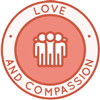
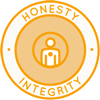
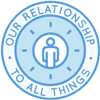
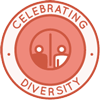
SHARE
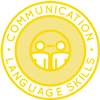
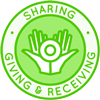
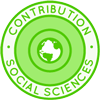
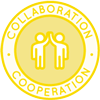
PLAY
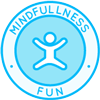
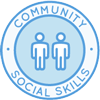
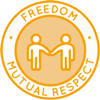
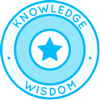
OPEN SOURCE TEACHING METHODOLOGY SUMMARIES
Montessori | Waldorf | Orff | Reggio | Multi-Intelligence | Bloom's Taxonomy | Study Tech | I-WE
INDEX OF ALL THE ONE COMMUNITY OPEN SOURCE LESSON PLANS

Click this image for the Lesson Plans for Life page with links to the rest of the lesson plans
THE WORLD'S LARGEST ONLINE FREE EDUCATION RESOURCE ARCHIVE
RELATED CONTENT AND OTHER RELATED RESOURCES
We're building this resource section. Click here if you have a suggestion or resource for this page.































 One Community
One Community



